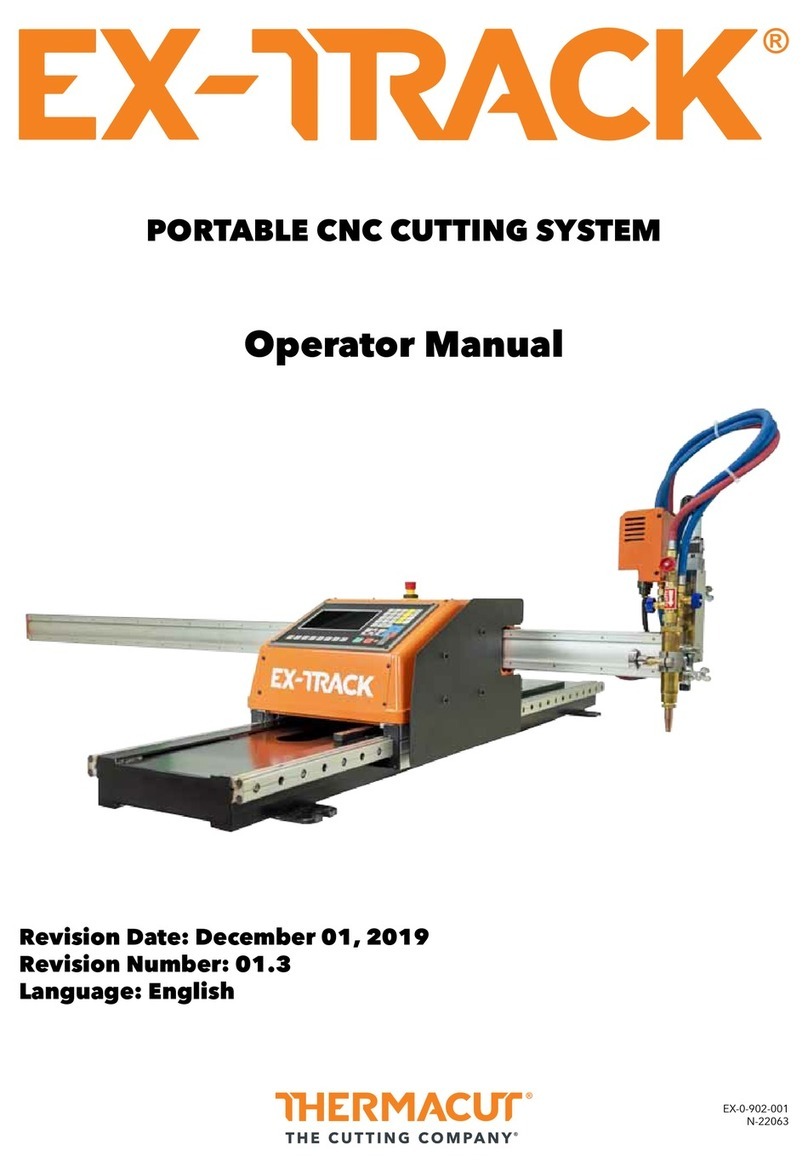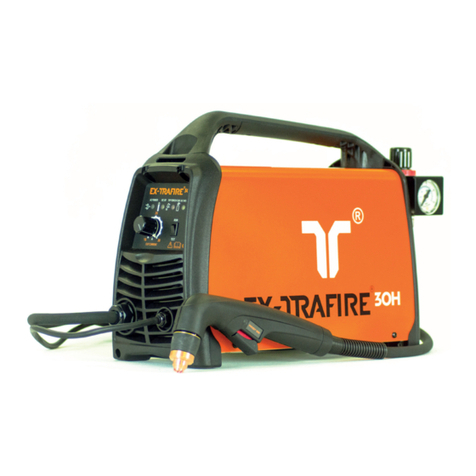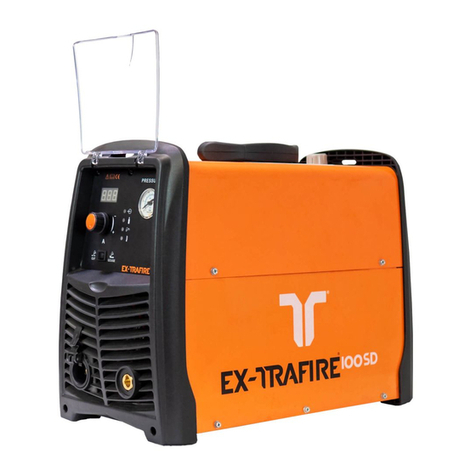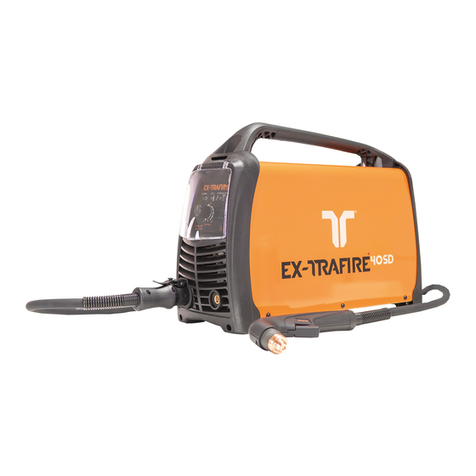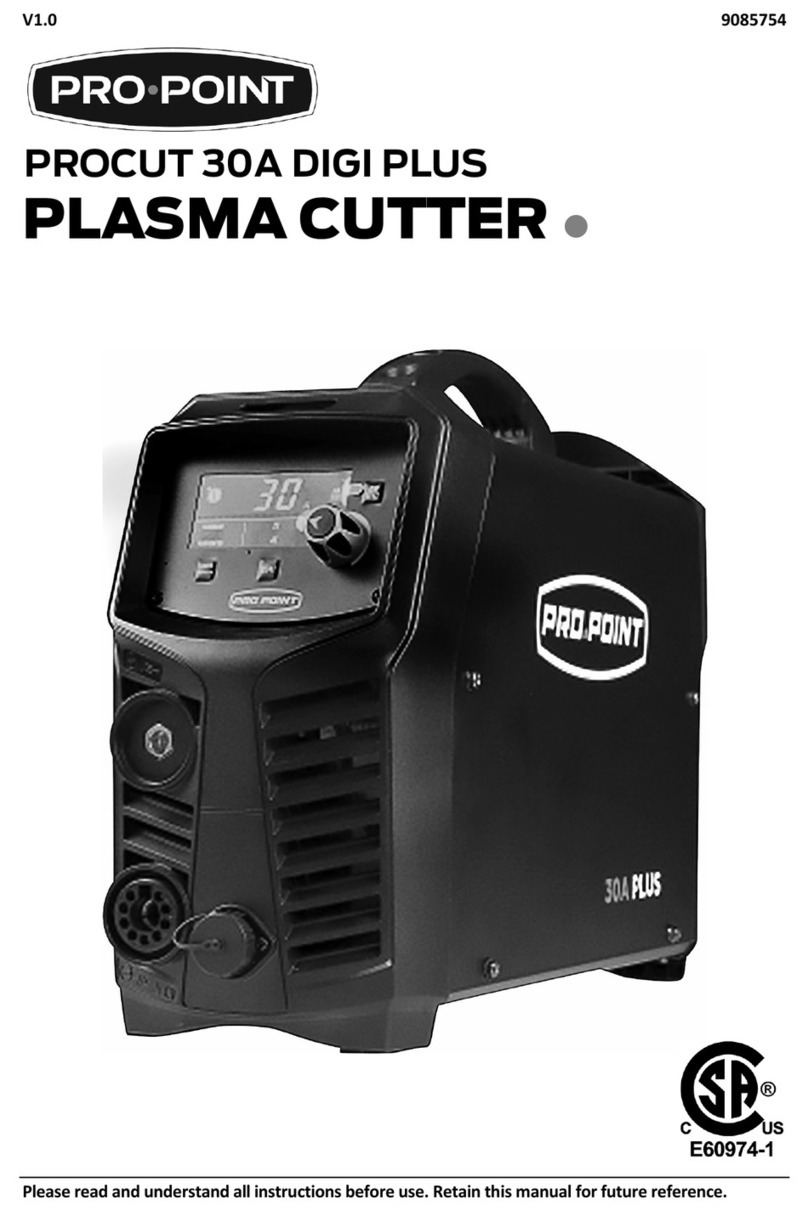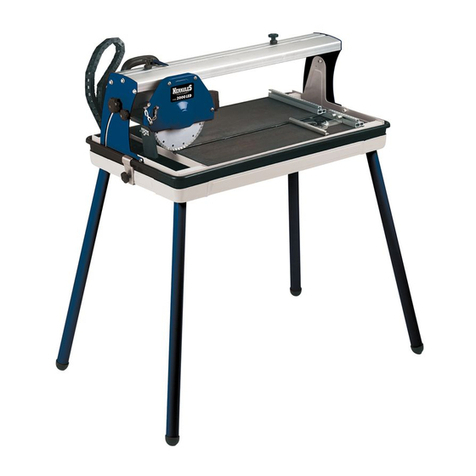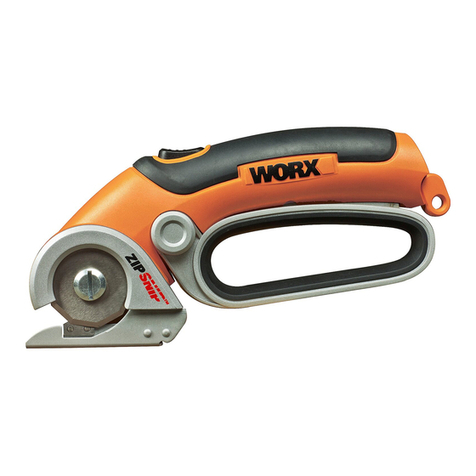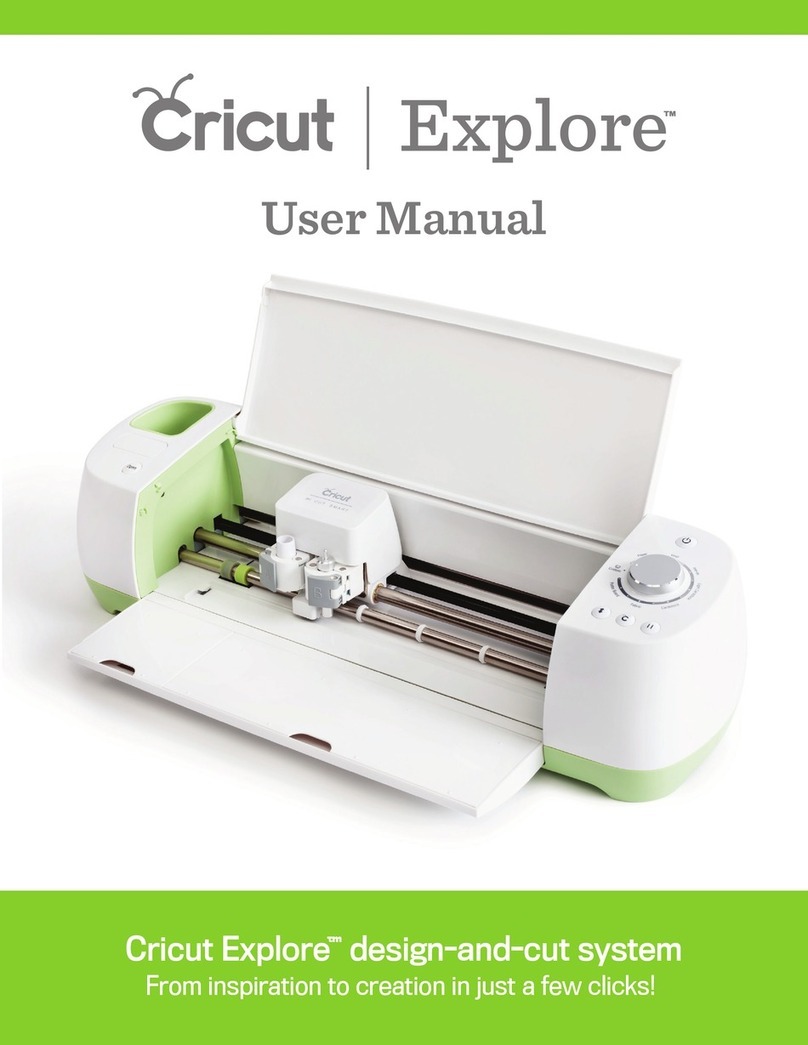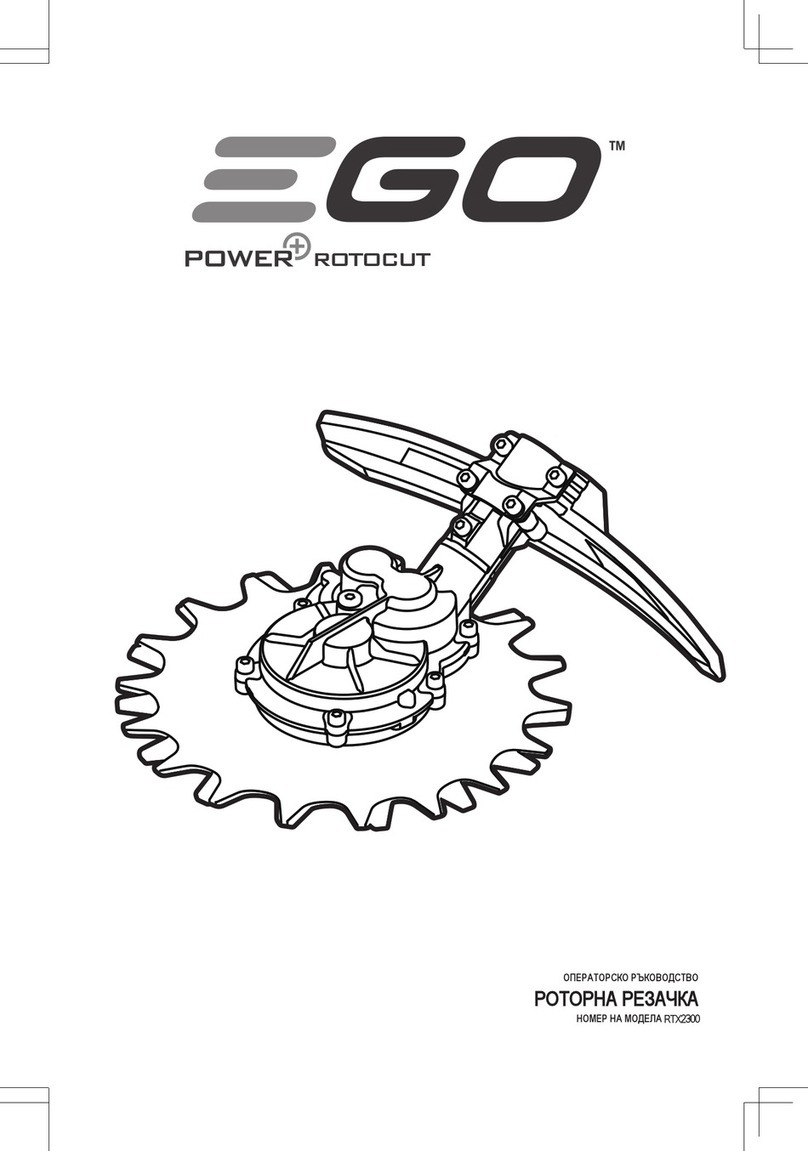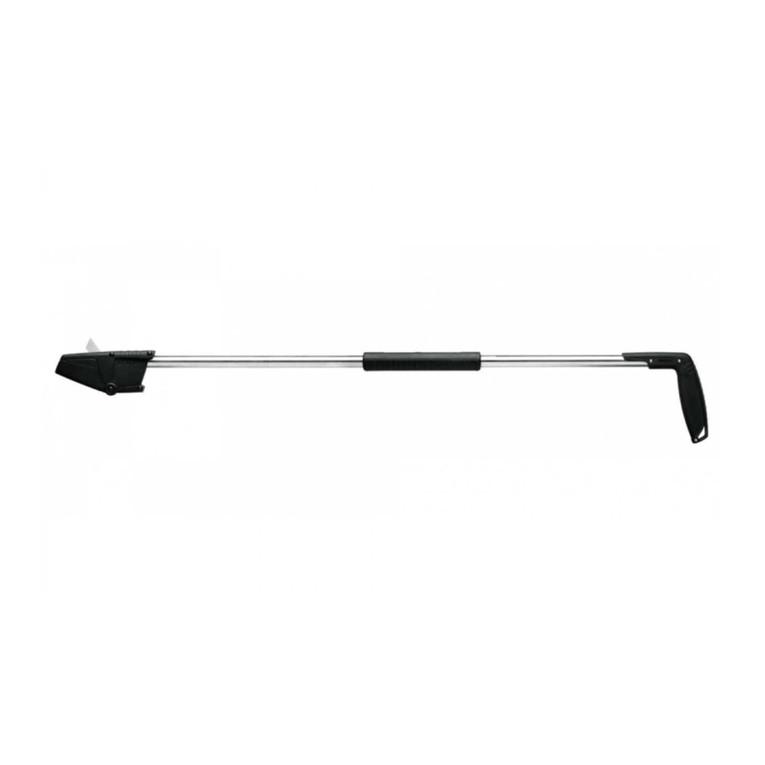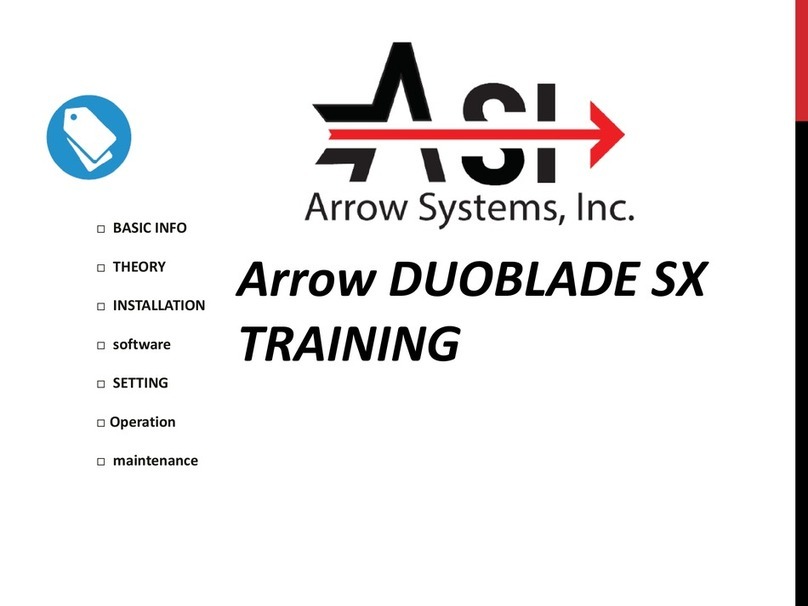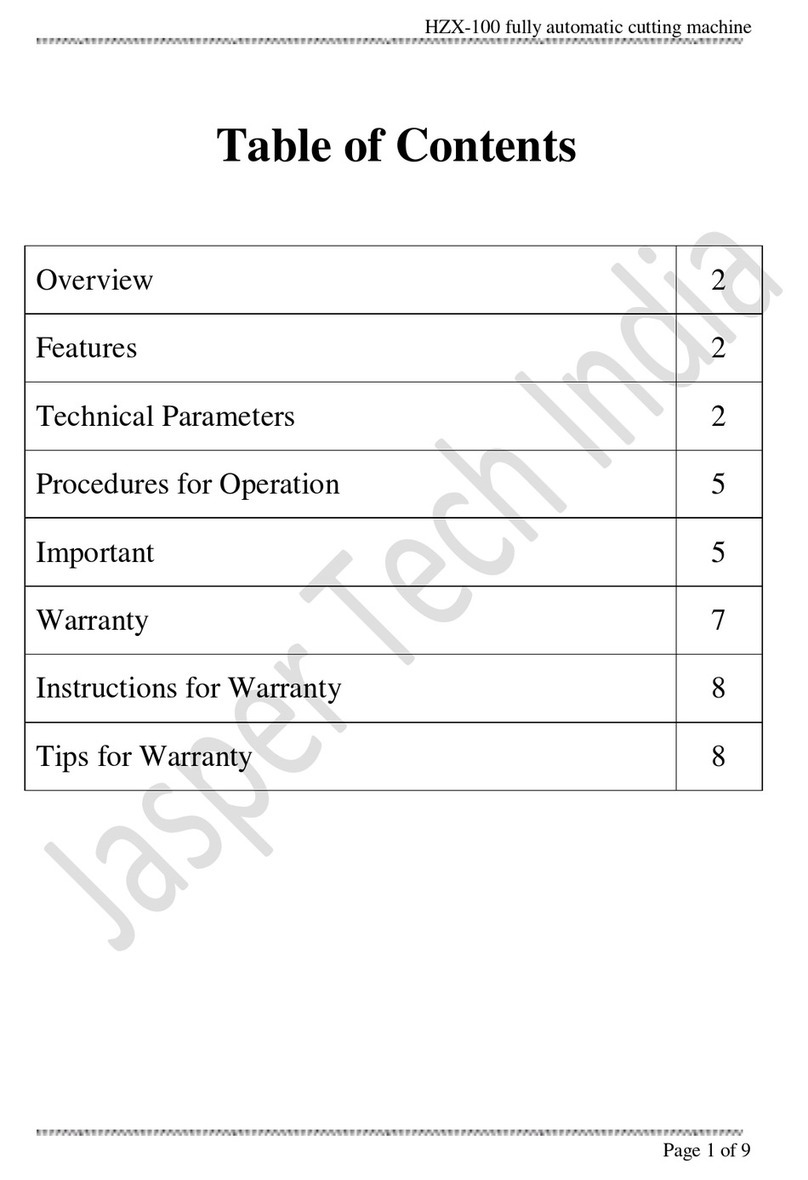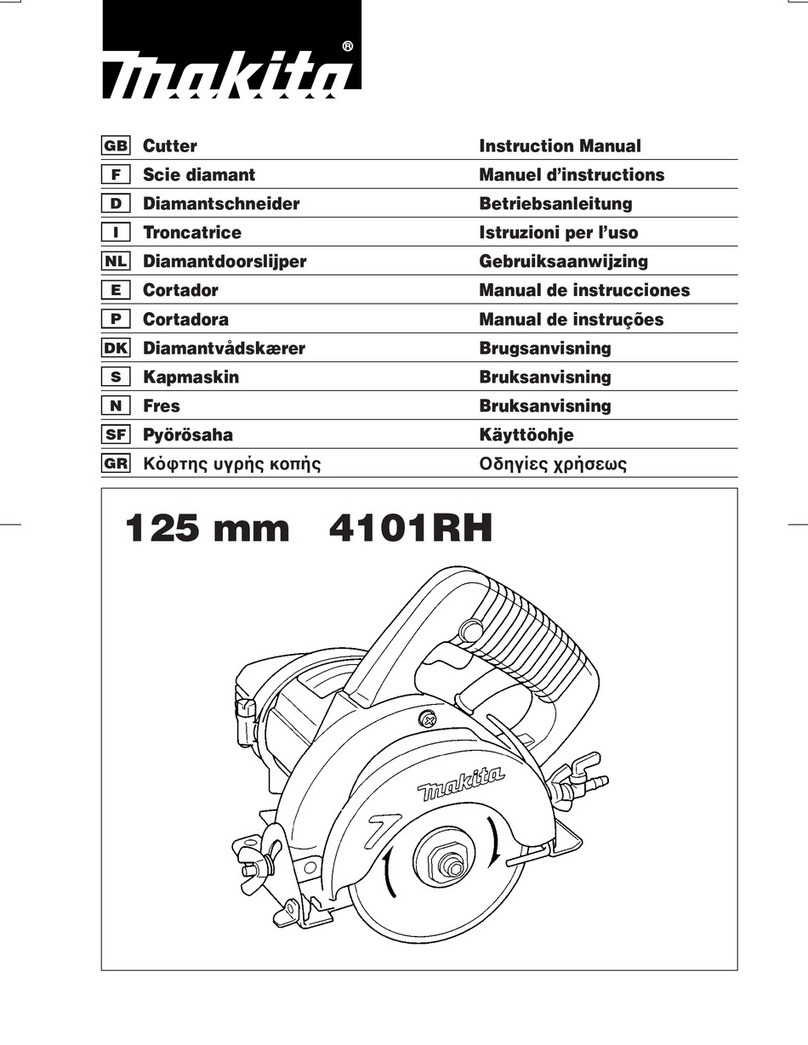THERMACUT EX-TRACK PA-1 User manual

Pipe Cutting System
Operating Instructions – EX-0-902-002/N23557
Revision 1, 27th March, 2023

EN - 2
EX-TRACK®PA-1
Table of contents
1 Identification ............................................................... EN-4
1.1 Marking.............................................................................................. EN-4
1.2 Identification plate ........................................................................... EN-4
1.3 Signs and symbols used.................................................................. EN-5
1.4 Classification of the warnings......................................................... EN-5
2 Safety........................................................................... EN-6
2.1 Designated use................................................................................. EN-6
2.2 Obligations of the operator............................................................ EN-6
2.3 Warning and notice signs................................................................ EN-6
2.4 Product-specific safety instructions................................................ EN-7
2.5 Safety instructions for the pipe cutter............................................ EN-7
2.6 Safety instructions for pipe cutting ................................................ EN-7
2.7 Personal protective equipment ...................................................... EN-7
2.8 Emergency information................................................................... EN-8
3 Scope of delivery......................................................... EN-8
4 Product description ..................................................... EN-9
4.1 Assembly and use ............................................................................ EN-9
4.2 Technical data................................................................................. EN-10
5 Transport and positioning .........................................EN-11
6 Setting up the device.................................................EN-12
6.1 Connecting to the gas supply....................................................... EN-12
6.2 Connecting the torch..................................................................... EN-12
6.3 Connecting the torch tip ............................................................... EN-12
6.4 Determining the correct number of chain links ......................... EN-13
6.5 Changing the wheels..................................................................... EN-13
6.6 Positioning the device on the pipe .............................................. EN-13
7 Operating the device.................................................EN-14
7.1 Selection of suitable torch tip....................................................... EN-15
7.2 Putting into operation.................................................................... EN-15
7.3 Cutting............................................................................................. EN-16
7.3.1 Bevel cutting ................................................................................... EN-17
7.4 Stopping the cutting process ....................................................... EN-17
8 Putting out of operation ............................................EN-17
9 Maintenance and cleaning ........................................EN-17
9.1 Maintenance and cleaning intervals............................................ EN-18
10 Faults and troubleshooting .......................................EN-19
11 Disposal .....................................................................EN-20
11.1 Disposal of materials...................................................................... EN-20
11.2 Disposal of consumables .............................................................. EN-20
11.3 Packaging........................................................................................ EN-20
12 Warranty ....................................................................EN-21

EX-TRACK®PA-1
EN - 3
13 Ordering information................................................ EN-22
14 Parts list..................................................................... EN-22
15 Cutting data .............................................................. EN-26
15.1 Propane cut charts..........................................................................EN-26

EN - 4
1 Identification EX-TRACK®PA-1
1 Identification
The EX-TRACK®PA-1 is a portable manual gas cutter for cutting pipes with
diameters of up to 600 mm. It is equipped with four wheels used to keep
balance as well as chains to secure the device on the pipe. The device may
be operated only with original Thermacut®parts. This documentation
exclusively describes the EX-TRACK®PA-1 gas cutter.
When used in this documentation, the term “device” always refers to the
EX-TRACK®PA-1 gas cutter.
1.1 Marking
This product fulfills the requirements that apply to the market to which it
has been introduced. A corresponding marking has been affixed to the
product.
1.2 Identification plate
The device is labeled by means of an identification plate on the housing.
For inquiries, please have at hand the device type, device number, and
year of construction per the identification plate.
Fig. 1 EX-TRACK®PA-1 identification plate

EX-TRACK®PA-1 1 Identification
EN - 5
1.3 Signs and symbols used
The following signs and symbols are used:
1.4 Classification of the warnings
The warnings are divided into four different categories and are indicated
prior to potentially dangerous work steps. The following signal words are
used depending on the type of hazard:
General instructions.
Action(s) to be carried out in succession.
Lists.
Cross-reference symbol refers to detailed, supplementary or further
information.
Caption, item description.
1
A
DANGER
Describes an imminent threatening danger. If not avoided, it may cause
severe injury or death.
WARNING
Describes a potentially dangerous situation. If not avoided, this may
result in serious injury or death.
CAUTION
Describes a potentially harmful situation. If not avoided, this may result in
slight or minor injuries.
NOTICE
Describes the risk of impairing work results or material damage and
indicates irreparable damage to the device or equipment.

EN - 6
2Safety EX-TRACK®PA-1
2Safety
This chapter warns of hazards that should be kept in mind to operate the
product safely. Non-observance of the safety instructions may result in risks
to the life and health of personnel, environmental damage or material
damage.
Observe the document entitled “Safety Instructions”.
2.1 Designated use
The device described in this document may be used only for the purpose
and manner described. The device is exclusively intended to cut pipes. Any
other use is considered improper and will lead to loss of warranty.
Unauthorized modifications or changes to enhance the performance are
not permitted and will lead to loss of warranty.
Do not exceed the maximum load data as defined by the document
supplied. Overloads lead to destruction.
Do not make any modifications or changes to this product.
Do not use or store the device outdoors where it is wet.
2.2 Obligations of the operator
Ensure that only qualified personnel are permitted to work on the
device or system.
Qualified personnel are:
— those who are familiar with the basic regulations on occupational
safety and accident prevention;
— those who have been instructed on how to handle the device;
— those who have read and understood these operating instructions;
— those who have been trained accordingly and have either of the
following qualifications:
• gas welding foreman‘s license,
• diploma of gas welding training,
• approval by the Ministry of Labor
— those who are able to recognize possible risks because of their
special training, knowledge, and experience.
Keep untrained persons out of the work area.
2.3 Warning and notice signs
The following warning, notice and mandatory signs can be found on the
product:
These markings must always be legible. They may not be covered,
obscured, painted over, or removed.
Read and observe the operating instructions.

EX-TRACK®PA-1 2Safety
EN - 7
2.4 Product-specific safety instructions
Only disassemble the device for maintenance and inspection purposes.
The device is made from aluminum alloy. Do not drop it or subject it to
heavy pressure.
Mount and position the device correctly.
Do not place the device on pipes when it is not used.
Always check the correct and free motion of the device before starting
the cutting operation.
Verify the correct chain tension before operation.
Do not mistake the top and bottom sides of the chain.
Do not use deformed, damaged or rusted chains.
Do not open any valves by force.
Do not move the device while the pre-heat flame is on.
Do not insert hands into rotary or moving sections.
2.5 Safety instructions for the pipe cutter
Verify that the gas hoses are not damaged, for example, by being driven
over, crushed or torn.
Check the gas hoses for damage and wear at regular intervals.
If it is necessary to replace the gas hoses, use only models which have
been approved by the manufacturer and which fully comply with the
local and/or national regulations.
2.6 Safety instructions for pipe cutting
Oxy-fuel cutting may cause damage to the eyes, skin, and hearing. Note
that other hazards may arise when the device is used with other cutting
components. Therefore, always wear the prescribed personal protective
equipment as defined by local regulations.
All metal vapors, especially lead, cadmium, copper, and beryllium, are
harmful. Ensure sufficient ventilation or extraction. Do not exceed the
current occupational exposure limits (OEL).
Ensure sufficient ventilation for gas cutting in order to prevent the air
from being polluted.
Adhere to the general fire protection regulations and remove
flammable materials from the vicinity of the cutting work area prior to
starting work. Provide appropriate fire extinguishing equipment in the
workplace.
Do not cut sealed containers or pressurized cylinders.
Do not use defective or contaminated pressure regulators.
Check for any leakage of gas from the distributor, the hoses or the
torch.
2.7 Personal protective equipment
Wear your personal protective equipment (PPE).
Ensure that others in close proximity are also wearing personal
protective equipment.

EN - 8
3 Scope of delivery EX-TRACK®PA-1
Personal protective equipment consists of protective clothing, safety
goggles, face protection, ear protectors, protective gloves, and safety
shoes.
2.8 Emergency information
In the event of an emergency, immediately disconnect the following
supplies at the gas inlet into the device or on the gas cylinders’ side:
—Oxygensupply
— Fuel gas supply
3 Scope of delivery
The following components are included in the scope of supply:
—1×EX-TRACK
®PA-1 body
— 1 x gas distributor incl. hoses and torch assembly
— 3× tip for propane (type 1, 2, 3)
— 2 x open wrench
— 1× consumables cleaning toolkit (needles)
— 2× gas fittings
— 1× horizontal torch holder
— 1 x vertical torch holder
— 1 x chain with 80 links
— 1× operator manual
— 2 x larger wheels (for cutting pipes with diameters in a range
between 80 – 108 mm)
The order data and ID numbers for the equipment parts and
consumables can be found at the end of this manual.
For more information about points of contact, consultation, and orders,
visit
www.ex-track.com
.
Although the items delivered are carefully checked and packaged, it is not
possible to fully rule out the risk of transport damage.
Goods-in inspection
Check for order completeness by checking the delivery note.
Check the delivered goods for damage (visual inspection).
Claim process
If goods are damaged, notify the final carrier.
Keep the packaging for possible inspection by the carrier.
Returns
Use original packaging and packing material for returns.
If you have questions concerning the packaging or how to secure the
device, contact your supplier, carrier or transport company.

EX-TRACK®PA-1 4 Product description
EN - 9
4 Product description
4.1 Assembly and use
The pipe cutter consists of the following components:
Fig. 2 Components and connections
AGas distributor
BButterfly nut
CClutch lever
DHoses
EConnector of torch holder
FUp-down hand wheel
GTorch
HButterfly screw
IWheel
JLeft-right hand wheel
KSprocket
LChain
MForward-backward hand knob
NFuel gas inlet
OOxygen inlet
Gas distributor (A) The gas distributor controls the flow of the
preheating oxygen, the fuel gas, and the
cutting oxygen.
Butterfly nut (B) The butterfly nut controls the chain tension
and through this the fit of the device on the
pipe to be cut.
Clutch lever (C) Holds the device on the pipe. If the clutch
lever is released, the device can be moved
quickly on the pipe.
Hoses (D) The three hoses are connected to the gas
distributor.
Connector of torch
holder (E)
Connects with the butterfly screw of the
lateral bar.
Up-down hand wheel (F) Moves the torch up and down.
D
I
CBA
F
E
G
H
J
I
K
L
M
N
O

EN - 10
4 Product description EX-TRACK®PA-1
4.2 Technical data
* After installation of two larger wheels it is possible to cut pipes with a
diameter between 80 – 108 mm.
Torch (G) Torch installed in the torch holder
Butterfly screw (H) Connects with the connector of the torch
holder.
Wheel (I) (4x) Provides balance and ensures cutting
precision.
Left-right hand wheel (J) Moves the device to the right or left.
Sprocket (K) Accommodates the chain. The rotation of
the sprocket moves the device.
Chain (L) Is put around the sprocket and the pipe to
hold the device in place.
Forward-backward hand
knob (M)
Moves the device forward and backward. A
clockwise turn moves the device forward, an
anti-clockwise turn moves it backward.
Fuel gas inlet (N) For the connection of the fuel gas hose.
Oxygen inlet (O) For the connection of the oxygen hose.
Table 1 Power supply specifications
Weight [kg] 12 (incl. accessories)
10.5 (without accessories)
Dimensions [mm] 325 x 325 x 425
Type of operation manual
Effective pipe cutting diameter [mm] 108* – 600
Pipe wall thickness [mm] 5 – 90
Groove I-shape and V-bevel
(angle up to 45°)
Range of vertical torch
movement [mm]
50
Range of lateral torch
movement [mm]
100
Table 2 Ambient conditions for transport and storage
Ambient temperature -20°C to +55°C
Relative humidity < 50% at +40°C
< 90% at +20°C
Table 3 Gas data
Permissible cutting gas Propane
Max. gas inlet pressure propane 3 bar / 43.5 psi
Max. gas inlet pressure oxygen 10 bar / 145 psi

EX-TRACK®PA-1 5 Transport and positioning
EN - 11
5 Transport and positioning
WARNING
Risk of injury due to improper transport and installation
Improper transport and installation can cause the device to tip or fall.
This may result in injury.
• Wear your personal protective equipment.
• Ensure that all supply lines and cables do not encroach into the area in
which employees are working.
• Note the weight of the device when lifting it.
4.2 Technical data on page EN-10
• Use an appropriate lifting tool with load handling equipment for
transporting and installing the device.
• Avoid abrupt lifting and setting down.
• Do not lift the device over individuals or other devices.
NOTICE
Risk of material damage due to improper transport and installation
The device is made from aluminum alloy. Improper transport or
installation can therefore cause material and irreparable damage to the
device.
• Protect the device against weather conditions, such as rain and direct
sunlight.
• Do not drop the device.
• Do not drop anything on the device.
• Protect the device from spatter when cutting.
• Use the device only in dry, clean, and well-ventilated rooms.

EN - 12
6 Setting up the device EX-TRACK®PA-1
6 Setting up the device
All references to parts refer to figure 2 in this document.
6.1 Connecting to the gas supply
6.2 Connecting the torch
6.3 Connecting the torch tip
1Select a suitable tip.
2Insert the tip.
3Tighten the nut with the two attached wrenches.
WARNING
Risk of injury due to explosion
The use of defective or damaged gas cylinders or hoses can cause
explosions. This can result in injury.
• Never use defective or leaking cylinders.
• Never use defective or leaking gas hoses.
• Use cylinders only for the purpose specified.
• Install cylinders in a place free from heat and open flame.
• Never cut pressurized cylinders or hermetically sealed containers.
• Ensure sufficient ventilation.
1Position the gas distributor (A) on the
device.
2Fix the gas distributor with the
hexagonal screw using a 6 mm
hexagonal key.
3Verify the hoses are correctly
connected.
4Verify there are no leaks.
1Insert the connector of torch holder
(E) into the butterfly nut casing at the
lateral bar.
2Connect the torch connector (E) to
the butterfly screw of the lateral
bar (H).
3Tighten both butterfly nuts.
4Adjust the angle and tighten the
connection.
H E
NOTICE
Risk of material damage due to incorrect installation
If the tip is tightened too much, it will heat up during operation and
become difficult to remove. Resulting damage to the tip will lead to
backfire.
• Do not overtighten the tip.
• Avoid damage to the tip.

EX-TRACK®PA-1 6 Setting up the device
EN - 13
6.4 Determining the correct number of chain links
The chain can be adapted to suit most diameters by increasing or
decreasing the number of links. The required number of links is calculated
as follows:
Let Y be the number of links and
D be the diameter of the pipe in centimeter rounded up to the next full
centimeter.
The formula then is Y = D +12.
Example:
The diameter of a pipe is 258 mm. 258 mm = 25.8 cm.
Rounded up it is 26 cm.
Y = 26+12 = 38 links.
6.5 Changing the wheels
6.6 Positioning the device on the pipe
1Unscrew the screws on the wheels
using a Phillips screwdriver size 1.
2Remove the wheels.
3Put on new wheels.
4Fix the wheels with the screws using a
Phillips screwdriver size 1.
WARNING
Risk of crushing
Improper assembly and disassembly of components can result in
crushing of limbs.
• Do not reach into the hazardous areas.
• Check and wear your personal protective equipment.
1Calculate the required number of
links.
2Position the device on the pipe.
3Turn the butterfly nut (B) to lower the
bracket with the sprocket.
4Place the chain over the sprocket.
Let the chain hang vertical to the
pipe.

EN - 14
7 Operating the device EX-TRACK®PA-1
7 Operating the device
5Close the links.
Verify that the rounded side of the
chain faces toward the pipe!
6Turn the butterfly nut (B) clockwise to
fix the device on the pipe.
Leave a clearance of 1 to 2 mm so
that the device can run smoothly.
7Hold the device and release the
clutch lever (C).
8Move the device within a range of
120 ° and align chain.
WARNING
Risk of injury or damage due to backfire
Backfires may cause serious accidents or fire.
• When a backfire occurs, you should find the cause.
• Inspect and maintain the device correctly before using it again.
• The followings are causes of backfire:
— Improper gas pressure adjustment.
— Overheated tip.
— Dross clogging in tip.
— Damages to the tapered section of tip or torch.
— If oil or grease is used on the connections of the oxygen hose.
NOTICE
Material damage due to flashback
Flashbacks can cause fire and damage to the device. If there is a hissing
sound in the torch, proceed as follows:
• Immediately disconnect the following supplies at the gas inlet into the
device or on the gas cylinders’ side:
•Oxygensupply
• Fuel gas supply

EX-TRACK®PA-1 7Operatingthedevice
EN - 15
7.1 Selection of suitable torch tip
1Select a tip that fits the thickness of the material to be cut.
2Insert tip into torch.
3Fix tip by tightening the nut with the two wrenches.
If the material to be cut is heavily rusted or you need a bevel cut with an
angle exceeding 20 degrees, select the tip one grade higher than
specified in the cutting data.
7.2 Putting into operation
Adjust the gas pressure on the following valves:
1Open the fuel gas valve 1/4 turn.
2Open the pre-heating oxygen valve 1/2 turn.
3Light the torch with an igniter.
4Gradually open the pre-heating oxygen valve until the standard flame
shows a white cone. The incandescent area should be uniform and have
a length about 5 to 6 mm.
5Open the cutting oxygen valve fully.
6Re-adjust the flame so it shows an orderly flow.
7Adjust the torch at a suitable distance from the surface:
Acetylene gas: 8 to 10 mm
Propane gas: 5 to 8 mm.
NOTICE
Bad cutting quality due to improper gas setting
A disorderly oxygen flow will have a serious negative impact on the
cutting surface.
• Close the pre-heating oxygen and fuel gas valve.
• Keep the cutting oxygen flowing and clean tip with a needle.
A neutral flame ensures a good quality
cut surface.
An oxygen flame shortens the flow of
the cutting oxygen and can be used for
bevel cutting. It can cause slug
deposition or melting of the upper
cutting surface.
Due to the high pressure of the cutting
oxygen, a carbonizing flame has similar
effects as the oxidizing flame.

EN - 16
7 Operating the device EX-TRACK®PA-1
7.3 Cutting
There are three ways to start cutting:
1Drill a hole and start on the edge of the hole, or
2Pierce through the material, or
3Start from the edge of the material.
Then
4Align the torch tip with the cutting start point.
5Open the valves as described in chapter 7.2.
6Ignite the torch with a lighter.
7Adjust the flame.
https://youtu.be/MCr54FVrzzY
8Pre-heat the cutting point until it is white hot.
9Open the valve for the cutting oxygen about 1/8 turn.
10 Position the torch tip about 15 to 20 mm above the surface to be cut in
order to prevent contamination of the tip.
11 Inspect the cutting state and use the knob (M) to control the cutting
speed.
12 Hold the butterfly nut (B) with one hand during operation. When the
device moves down, support it, when it moves up, lift it, as shown in the
following illustration.
13 In order to change direction, turn the knob (M).
Turning the knob clockwise moves the device forward, turning the knob
anti-clockwise moves the device backwards.

EX-TRACK®PA-1 8 Putting out of operation
EN - 17
7.3.1 Bevel cutting
The torch connector is equipped with two holes. For bevel cuts position the
torch in the lower one. Proceed as follows:
1Position the torch in the lower hole of the torch connector.
2Position the torch holder and torch in the required angle.
3Fix the torch with the butterfly nut (B).
4Choose a tip one grade larger than specified in the cutting data for the
material thickness.
5Use an oxidizing flame and reduce the speed a little bit.
7.4 Stopping the cutting process
1Close the following supplies at the gas inlet into the device or on the gas
cylinders’ side:
—Oxygenvalve
— Fuel gas valve
8 Putting out of operation
1Disconnect the device from the oxygen supply.
2Disconnect the device from the fuel gas supply.
9 Maintenance and cleaning
Scheduled maintenance and cleaning are prerequisites for a long service
life and trouble-free operation. The maintenance cycle is determined by
the work environment and the device’s maintenance intervals. If the device
is operated for more than 8 hours a day, the maintenance intervals should
be changed as needed. Always observe the provisions of DIN 31051
“Fundamentals of maintenance” and DIN EN 13306 “Maintenance -
Maintenance terminology”, as well as any local laws and regulations.
CAUTION
Risk of injury due to hot parts
Parts may still be hot after the operation. People are at a risk of burns.
• Wear your personal protective equipment.
• Allow the cutting torch to cool down for 5 – 10 minutes before
touching the parts.
CAUTION
Fire hazard due to contamination
Dust deposits inside the device can lead to a reduction in insulation. This
can cause short circuits or fires.
• Clean the device annually with dried compressed air to remove dust
and cutting fume residue.

EN - 18
9 Maintenance and cleaning EX-TRACK®PA-1
9.1 Maintenance and cleaning intervals
The specified intervals are standard values and refer to single-shift
operation. We recommend recording the inspections. The date of the
inspection, the detected defects and the name of the inspector should be
documented.
Maintenance and inspection services should always be performed by
skilled repair engineers.
WARNING
Risk of self-ignition if oil or grease is used with oxygen.
If oil or grease is used on the connections of the oxygen pipe or on the
pressure regulators, self-ignition can occur.
• Never use oil or grease together with oxygen.
Daily/every 6 hours
of cutting
Clean the four wheels with an iron wire brush.
Lubricate the rotary section of the device, i.e.
the wheels, sprocket, worm gear, handle, and
worm bearing.
Check the consumables for wear.
Clean the nozzle orifice of the tip.
Weekly Lubricate the butterfly nut and sliding sections
Every 3 months Check the device for signs of cracks.
Check the gas hose and connections for leaks.

EX-TRACK®PA-1 10 Faults and troubleshooting
EN - 19
10 Faults and troubleshooting
Contact your retailer or Thermacut®in the event of questions or
problems.
Table 4 Fault messages in the display
Error Cause Troubleshooting
Device
does not
work
Chain tension too great. Adjust the chain tension.
Worn worm gear. Clean and/or repair worm
gear.
Wheel does not rotate. Lubricate or replace, if
necessary.
Defective
surface
Worn or damaged tip. Clean the tip or replace, if
necessary.
Unsuitable gas pressure
and/or cutting speed.
Verify the correct gas
pressure and cutting speed.
Tip
The injection stream of
cutting oxygen does not
extend straight.
Replace the tip.
The injection stream of
the cutting oxygen
bifurcates.
The tip emanates a
clicking sound when
cutting.
The pre-heating flame is
not flat.
Gas leaks and/or burns at
the nut.

EN - 20
11 Disposal EX-TRACK®PA-1
11 Disposal
Disassemble equipment prior to proper disposal.
Collect components separately and recycle in an environmentally
responsible manner.
Observe local regulations, laws, provisions, standards and guidelines.
11.1 Disposal of materials
This product is mainly made of metallic materials that can be melted in
steel and iron works and are thus almost infinitely recyclable. The plastic
materials used are labeled in preparation for their sorting and separation
for later recycling.
11.2 Disposal of consumables
Oil, greases and cleaning agents must not contaminate the ground or
enter the sewage system. These substances must be stored, transported
and disposed of in suitable containers. Observe the relevant local
regulations and disposal instructions in the safety data sheets specified by
the manufacturer of the consumables. Contaminated cleaning tools
(brushes, rags, etc.) must also be disposed of in accordance with the
information provided by the consumables' manufacturer.
Observe the relevant local regulations and disposal instructions in the
safety data sheets specified by the manufacturer of the consumables.
11.3 Packaging
Thermacut®has reduced the packaging to the necessary minimum. The
ability to recycle packaging materials is always considered during their
selection.
Table of contents
Other THERMACUT Cutter manuals
Popular Cutter manuals by other brands

BrandSafway
BrandSafway Spider ProCut Operator's manual

Far Tools
Far Tools TCR 720B Original manual translation
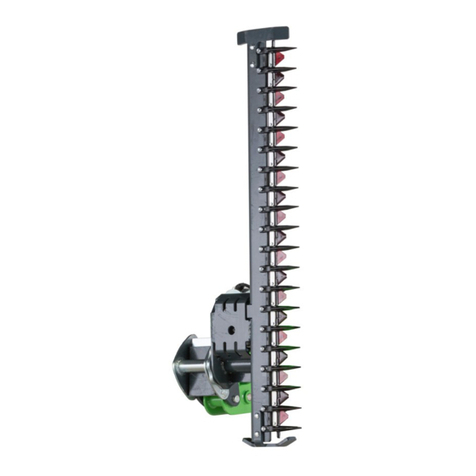
Avantco
Avantco S30 Operator's manual for Attachment
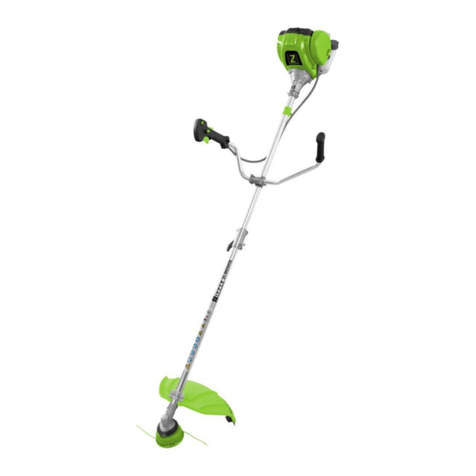
Z.I.P.P.ER MASCHINEN
Z.I.P.P.ER MASCHINEN ZI-MOS4TA user manual
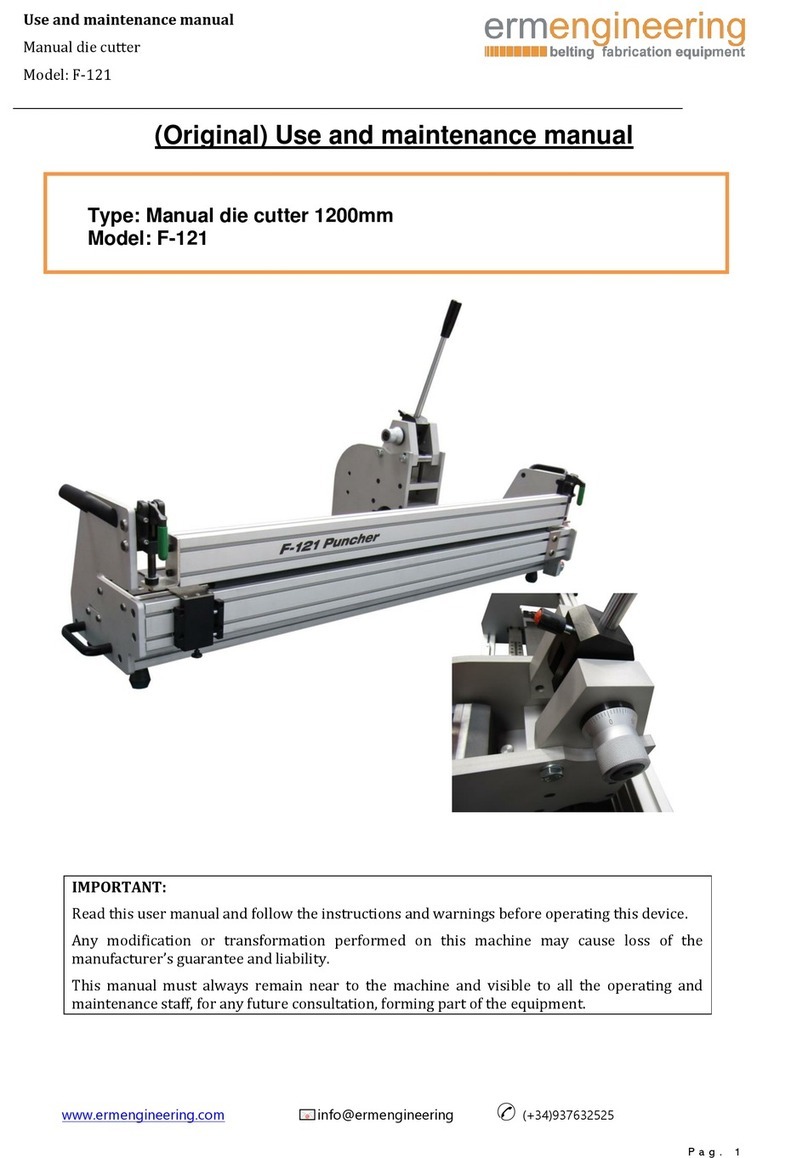
E-RM
E-RM F-121 Use and maintenance manual
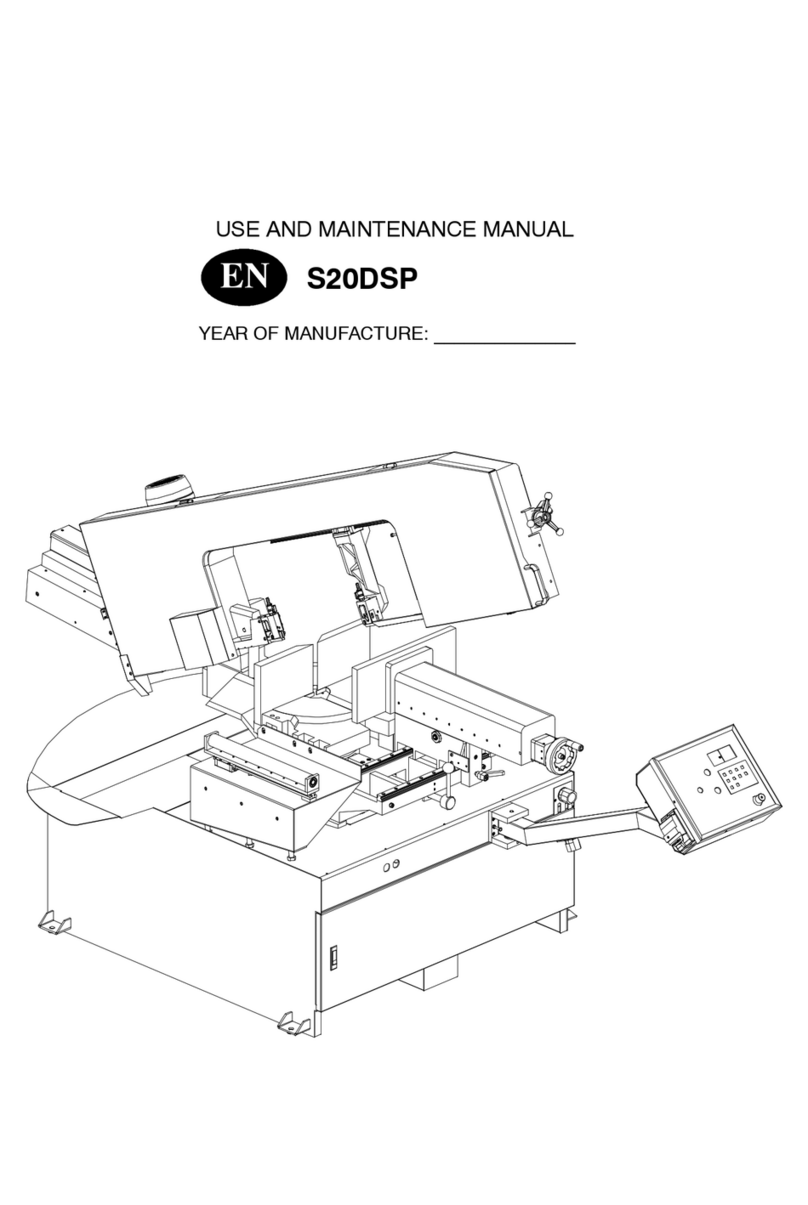
Hyd-Mech
Hyd-Mech S20DSP Use and maintenance manual
